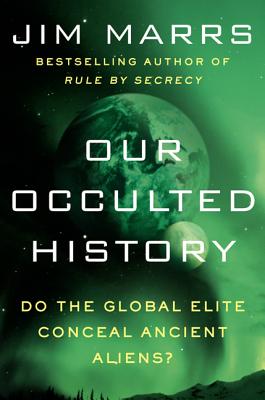Jason Mulgrew, popular blogger and author of Everything Is Wrong with Me, continues his depreciating yet hilarious self-reflection with 236 Pounds of Class Vice President.
Set in Mulgrew’s high school years, this genuine and honest memoir revisits his teenage antics and escapades as he, while navigating the indignity of puberty, attempts to run for vice president of the student body, displays a penchant for long fur capes, and (naturally) wonders about sex.
Mulgrew’s blog, Everything Is Wrong With Me, has received more than 200 million hits since its inception in 2004. Complete with awkward, “what was he thinking?” photos—unmitigated proof of Mulgrew’s ungainly adolescence—236 Pounds of Class Vice President is an no-holds-barred yet tender look at the years some of us would rather forget.
Set in Mulgrew’s high school years, this genuine and honest memoir revisits his teenage antics and escapades as he, while navigating the indignity of puberty, attempts to run for vice president of the student body, displays a penchant for long fur capes, and (naturally) wonders about sex.
Mulgrew’s blog, Everything Is Wrong With Me, has received more than 200 million hits since its inception in 2004. Complete with awkward, “what was he thinking?” photos—unmitigated proof of Mulgrew’s ungainly adolescence—236 Pounds of Class Vice President is an no-holds-barred yet tender look at the years some of us would rather forget.
11/9/2001: Christian fundamentalists
hijack four jetliners. They fly two into the Tigris & Euphrates
World Trade Towers in Baghdad, and a third into the Arab Defense
Ministry in Riyadh. The fourth plane, believed to be bound for Mecca, is
brought down by its passengers. The United Arab States declares a War
on Terror. Arabian and Persian troops invade the Eastern Seaboard and
establish a Green Zone in Washington, D.C. . . .
Summer, 2009: Arab Homeland Security agent Mustafa al Baghdadi interrogates a captured suicide bomber. The prisoner claims that the world they are living in is a mirage—in the real world, America is a superpower, and the Arab states are just a collection of "backward third-world countries." Other captured terrorists have been telling the same story.
The gangster Saddam Hussein is conducting his own investigation. And the head of the Senate Intelligence Committee—a war hero named Osama bin Laden—will stop at nothing to hide the truth. As Mustafa and his colleagues venture deeper into the unsettling world of terrorism, politics, and espionage, they are confronted with questions without any rational answers, and the terrifying possibility that their world is not what it seems.
After fifteen years, Dr. Cyrus Mills returns to rural Vermont to inherit the Bedside Manor for Sick Animals, the failing veterinary practice of his recently deceased and long-estranged father. Cyrus, a veterinary pathologist far more comfortable with cold clinical facts than living, breathing animals (not to mention their quirky, demanding owners), intends to sell the practice and get out of town as fast as he can.
Then his first patient—a down-on-her-luck golden retriever named Frieda Fuzzypaws—wags her way through the door, and suddenly life gets complicated. With the help of a black Labrador gifted in the art of swallowing underwear, a Persian cat determined to expose her owner’s lover as a gold digger, and the allure of a feisty, pretty waitress from the local diner, Cyrus gets caught up in a new community and its endearing residents, both human and animal. Sensing he may have misjudged the past, he begins to realize it’s not just his patients that need healing.
The Patron Saint of Lost Dogs is a winsome tale of new beginnings, forgiveness, and the joy of finding your way home.
Told with the verve and ghoulish fun of a Tim Burton film, The Lady and Her Monsters is a highly entertaining blend of literary history, lore, and early scientific exploration that traces the origins of the greatest horror story of all time–Mary Shelley's Frankenstein
Exploring the frightful milieu in which Frankenstein was written, Roseanne Montillo, an exciting new literary talent, recounts how Shelley's Victor Frankenstein mirrored actual scientists of the period. Montillo paints a rich portrait of Shelley and her husband, Percy Bysshe Shelley, and their contemporaries and their friend Lord Byron. Intellectually curious, they were artists, poets, and philosophers, united in captivation with the occultists and daring scientists risking their reputations and their immortal souls to advance our understanding of human anatomy and medicine.
These remarkable investigations could not be undertaken without the cutthroat grave robbers who prowled cemeteries for a supply of fresh corpses. The newly dead were used for both private and very public autopsies and dissections, as well as the most daring trials of all: attempts at human reanimation through the application of electricity.
Juxtaposing monstrous mechanization and rising industrialism with the sublime beauty and decadence of the legendary Romantics who defined the age, Montillo takes us into a world where poets become legends in salons and boudoirs; where fame-hungry "doctors" conduct shocking performances for rabid, wide-eyed audiences; and where maniacal body snatchers secretly toil in castle dungeons.
Summer, 2009: Arab Homeland Security agent Mustafa al Baghdadi interrogates a captured suicide bomber. The prisoner claims that the world they are living in is a mirage—in the real world, America is a superpower, and the Arab states are just a collection of "backward third-world countries." Other captured terrorists have been telling the same story.
The gangster Saddam Hussein is conducting his own investigation. And the head of the Senate Intelligence Committee—a war hero named Osama bin Laden—will stop at nothing to hide the truth. As Mustafa and his colleagues venture deeper into the unsettling world of terrorism, politics, and espionage, they are confronted with questions without any rational answers, and the terrifying possibility that their world is not what it seems.
In Not Less Than Everything,
Catherine Wolff gathers the world's best contemporary Catholic writers,
including James Martin, Alice McDermott, Tobias Wolff, and Ann Patchett,
to share their thoughts on brave men and women such as Joan of Arc and
Oscar Romero—heroes who've challenged the dogma while holding
steadfastly to their faith.
In each of these thought-provoking essays, these greatly respected writers and thinkers engage personally with his or her favorite heretic, exploring the tensions that arise from conflicting demands of conscience and authority, of inspiration and orthodoxy, and from the challenge of living one's faith in the real world.
In each of these thought-provoking essays, these greatly respected writers and thinkers engage personally with his or her favorite heretic, exploring the tensions that arise from conflicting demands of conscience and authority, of inspiration and orthodoxy, and from the challenge of living one's faith in the real world.
Bestselling author Jim Marrs steps once again to the cutting-edge of research into conspiracies and hidden truths. In Our Occulted History, Marrs goes beyond the revelations of his classic Alien Agenda
and illustrates how human civilization may have originated with
non-humans who visited earth eons ago...and may still be here today
Our Occulted History: Do the Global Elite Conceal Ancient Aliens? is an extensive survey that includes a mass of well-documented scientific and historical texts and sources. It will change the way you view the origins of mankind and the current state of society.
No subject is too controversial for Marrs, an award-winning journalist whose other investigative works include Crossfire: The Plot That Killed Kennedy, the basis for the Oliver Stone film JFK; Rule by Secrecy; and The Trillion-Dollar Conspiracy.
Our Occulted History: Do the Global Elite Conceal Ancient Aliens? is an extensive survey that includes a mass of well-documented scientific and historical texts and sources. It will change the way you view the origins of mankind and the current state of society.
No subject is too controversial for Marrs, an award-winning journalist whose other investigative works include Crossfire: The Plot That Killed Kennedy, the basis for the Oliver Stone film JFK; Rule by Secrecy; and The Trillion-Dollar Conspiracy.
After fifteen years, Dr. Cyrus Mills returns to rural Vermont to inherit the Bedside Manor for Sick Animals, the failing veterinary practice of his recently deceased and long-estranged father. Cyrus, a veterinary pathologist far more comfortable with cold clinical facts than living, breathing animals (not to mention their quirky, demanding owners), intends to sell the practice and get out of town as fast as he can.
Then his first patient—a down-on-her-luck golden retriever named Frieda Fuzzypaws—wags her way through the door, and suddenly life gets complicated. With the help of a black Labrador gifted in the art of swallowing underwear, a Persian cat determined to expose her owner’s lover as a gold digger, and the allure of a feisty, pretty waitress from the local diner, Cyrus gets caught up in a new community and its endearing residents, both human and animal. Sensing he may have misjudged the past, he begins to realize it’s not just his patients that need healing.
The Patron Saint of Lost Dogs is a winsome tale of new beginnings, forgiveness, and the joy of finding your way home.
Told with the verve and ghoulish fun of a Tim Burton film, The Lady and Her Monsters is a highly entertaining blend of literary history, lore, and early scientific exploration that traces the origins of the greatest horror story of all time–Mary Shelley's Frankenstein
Exploring the frightful milieu in which Frankenstein was written, Roseanne Montillo, an exciting new literary talent, recounts how Shelley's Victor Frankenstein mirrored actual scientists of the period. Montillo paints a rich portrait of Shelley and her husband, Percy Bysshe Shelley, and their contemporaries and their friend Lord Byron. Intellectually curious, they were artists, poets, and philosophers, united in captivation with the occultists and daring scientists risking their reputations and their immortal souls to advance our understanding of human anatomy and medicine.
These remarkable investigations could not be undertaken without the cutthroat grave robbers who prowled cemeteries for a supply of fresh corpses. The newly dead were used for both private and very public autopsies and dissections, as well as the most daring trials of all: attempts at human reanimation through the application of electricity.
Juxtaposing monstrous mechanization and rising industrialism with the sublime beauty and decadence of the legendary Romantics who defined the age, Montillo takes us into a world where poets become legends in salons and boudoirs; where fame-hungry "doctors" conduct shocking performances for rabid, wide-eyed audiences; and where maniacal body snatchers secretly toil in castle dungeons.





No comments:
Post a Comment